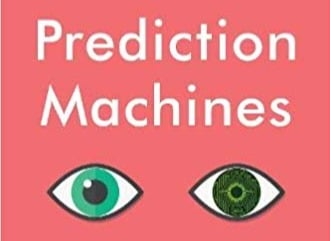With the constant stream of articles, books and buzz over artificial intelligence, CEOs are under pressure to launch AI initiatives. And while AI has been around for decades, odds are slim that a CEO has any experience with this technology and/or how to assess the potential or manage and measure the return on an AI initiative. Bridging the gap between the transformational claims of AI proponents and the pragmatism of the AI “how to” guides is Ajay Agrawal’s book.

One of the critical first steps to insure an ROI on your AI investment is to pick the right projects. Isolate the prediction component.
Companies that do not have digital DNA can easily make big mistakes trying to convert the claims of AI visionaries into a pragmatic, affordable set of projects. The first step in this process is an understanding of the economics of AI.
In that vein, this McKinsey article/interview, The Economics of Artificial Intelligence with Ajay Agrawal provides a framework for understanding how AI can help and what’s best left to your employees: think prediction versus judgment.
McKinsey considers his book, Prediction Machines: The Simple Economics of Artificial Intelligence a CEO guide to parsing and prioritizing AI opportunities.
Agrawal's thesis is that AI’s single purpose is that “it significantly lowers the cost of prediction”.
“When looking at artificial intelligence from the perspective of economics, we ask the same, single question that we ask with any technology: What does it reduce the cost of? Economists are good at taking the fun and wizardry out of technology and leaving us with this dry but illuminating question. The answer reveals why AI is so important relative to many other exciting technologies. AI can be recast as causing a drop in the cost of a first-order input into many activities in business and our lives—prediction."
The growing importance of data, judgment, and action
Frameworking the economic benefits of computing largely as the result of lowering the cost of arithmetic, AI is presented as continuing that trend and extending the cost reduction curve dramatically. He notes that when the price of prediction drops, the value of its substitutes will go down and the value of its complements will go up. The main substitute for machine prediction is human prediction, something we do daily in our work. However in many circumstances, we are miserable predictors, so AI can provide lots of help here.
Prediction’s complements will go up
The complement that is most frequently cited is data. AI both needs lots of data and creates more of it. The second complement is human judgment. Decisions involve both prediction and judgment, and as the value of human prediction falls, the value of human judgment goes up because AI doesn’t do judgment. The third complement to prediction is action. Without decisions leading to action there is no value creation.
What follows from applying this component analysis to the various processes in your organization is a list of processes where prediction is critical and time consuming. By listing these, estimating the value/return on substituting AI for prediction, you can develop a hit list of the best projects to attack first.
From better processes to digital transformation
Agrawal also provides an interesting point that may help clarify the difference between the many IT/digital projects you’re considering and those that truly deserve to be called (digital) transformational. He posits that “by doing only one thing—turning up the prediction-accuracy knob—the change made by AI goes from one that’s incremental to one that’s transformational”.
Five imperatives for harnessing the power of low-cost prediction
After you’ve identified your priorities, there are several things you can do to position your organization to maximize the benefits of prediction machines.
- Develop a thesis on time to AI impact - when will the most valuable AI application in your sector hit the transformational point?
- Recognize that AI progress will likely be exponential - recognize that your progress in AI will in many cases be exponential rather than linear.
- Trust the machines – when your AIs have demonstrated superior performance in prediction, let them do their job (but put in guard rails).
- Know what you want to predict - AI effectiveness is directly tied to goal-specification clarity (not much different than people).
- Manage the learning loop - what makes AI so powerful is its ability to learn. Companies need to ensure that information flows into decisions, they follow decisions to an outcome, and then they learn from the outcome and feed that learning back into the system.
Get started soon
If you haven’t started yet, get going. You’re on the long flat portion of the curve (first half of the chessboard), and you have a lot of work to do before you’ll see some benefits. If you’ve already initiated some AI projects, take a new look at the projects and ask how each one isolates and attacks the prediction problem. If the project scope combines the data, judgment and action steps in the process, force your team to break it out and assess the ROI, risk, cost and timetable separately. I hope this helps and would love to hear how it goes.


